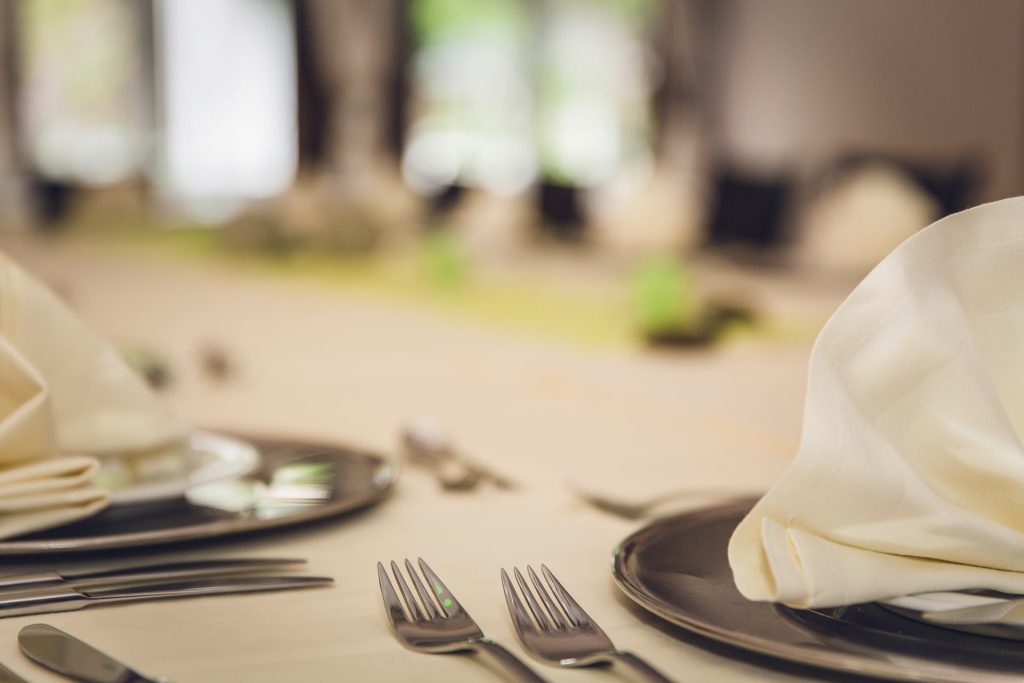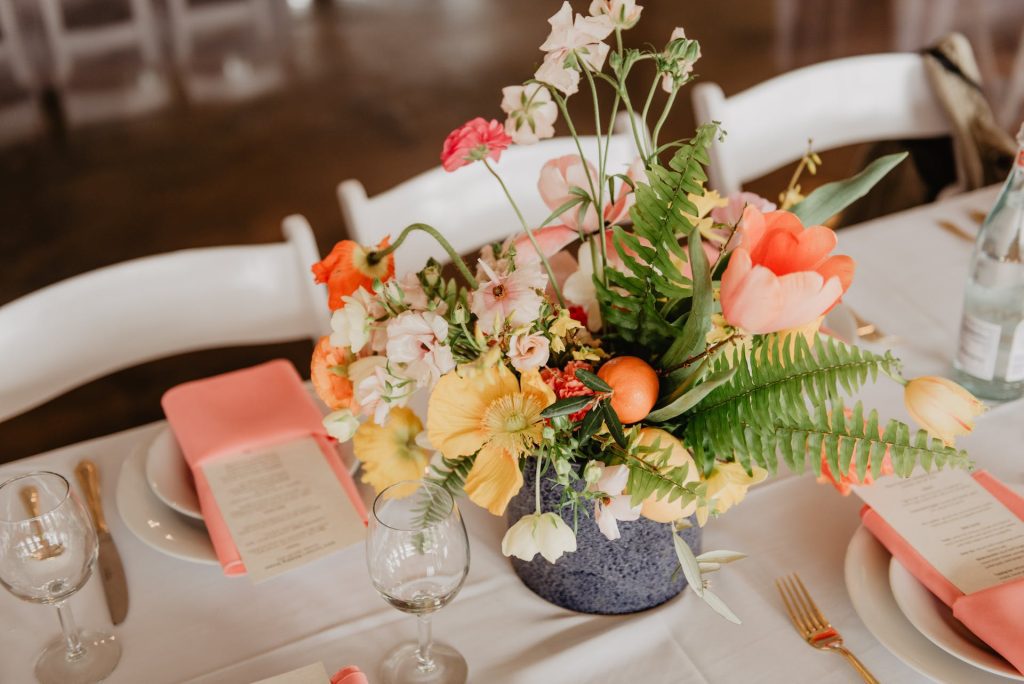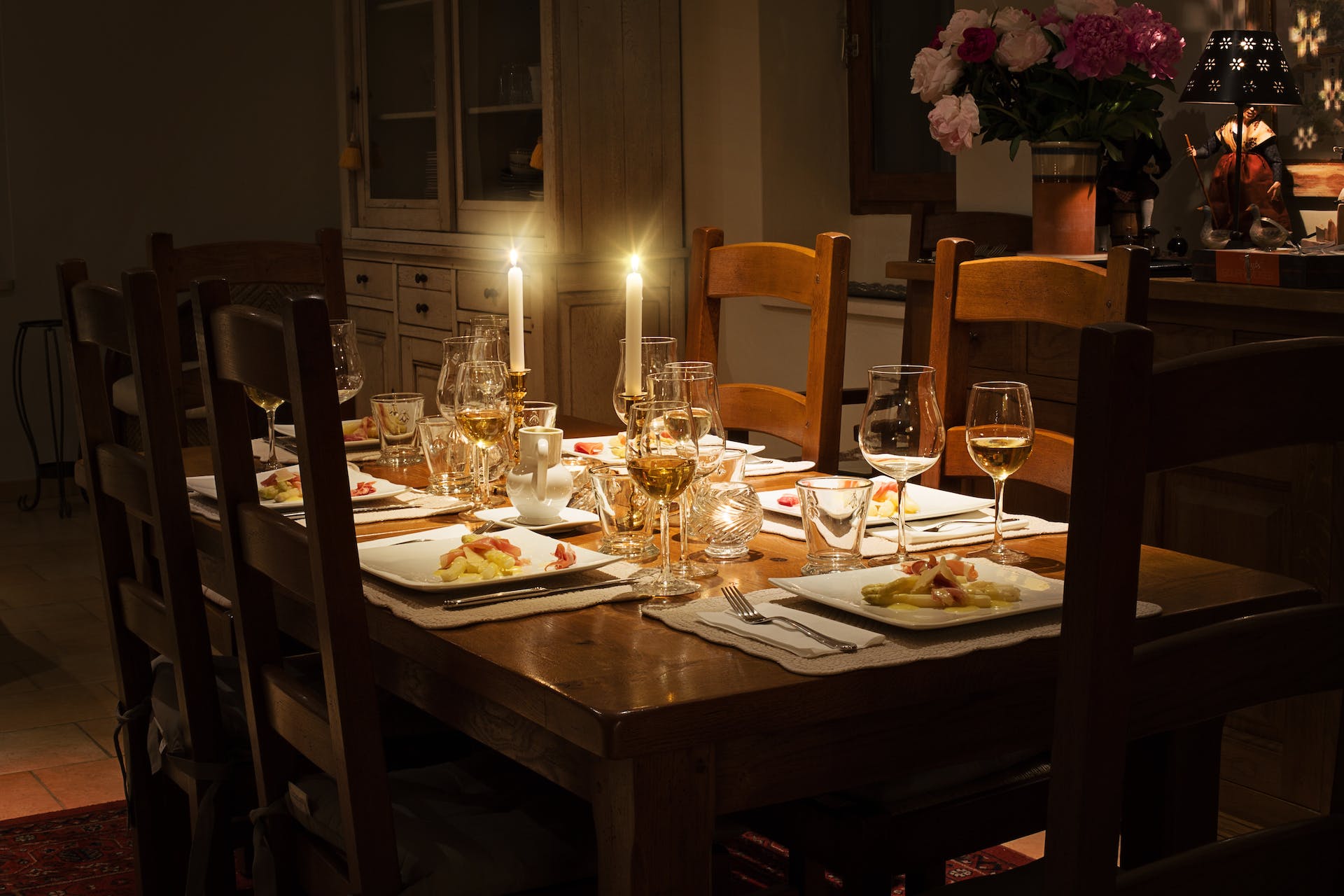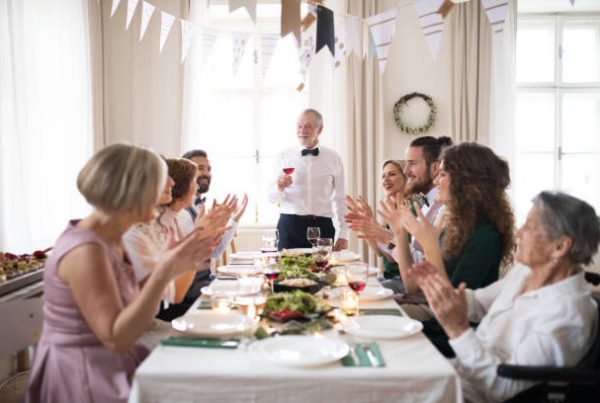Setting a beautiful table is a gesture of welcome and a way to make a meal feel special. Whether it’s a casual family dinner or a formal dinner party, taking the time to set a proper table shows care and attention, contributing to an enjoyable dining experience for all.
Elevate Your Dining with Expertise
At Private Chef Direct, we understand the importance of crafting the perfect ambiance for your meals. Along with exquisite flavours, a beautifully set table is a hallmark of British dining traditions and demonstrates exceptional service. Let’s explore the essentials of a classic table setting.

Laying the Foundation
- Tablecloths and Placemats: For formal occasions, crisp tablecloths add elegance. Opt for linen or quality cotton in colours complementing your dinnerware. Everyday meals often favor individual placemats; choose styles that protect your table and add a visual flourish.
- The Dinner Plate: This is the foundation of your setting. Consider standard sizes (around 25-30cm diameter) in bone china, porcelain, or quality stoneware. Place in the centre, approximately 2.5cm from the table’s edge.
Cutlery Conundrum
- Placement Principles: In the UK, forks go to the left of the plate and knives and spoons to the right. The cutting edge of the knife should always face towards the plate.
- Order of Use: Cutlery is placed in the order it will be used, working from the outside in. So, cutlery for the starter might be outermost, followed by main course cutlery next, and so on.
- Dessert Dilemma: Dessert spoons and forks are typically placed horizontally above the dinner plate. The fork tines face right, and the spoon bowl faces left. For extra formality, these may be brought out with the dessert course.
The Sparkle of Glassware
- Types of Glasses: The essential glass on a British table is the water goblet. Place this just above the top right side of the dinner plate. If you’re serving wine, include wine glasses positioned slightly to the right and further back from the water goblet. Red and white wine glasses have subtle variations in shape for optimal enjoyment.
- Angled Placement: Your glassware should form a slight diagonal or triangle at the top right corner of the setting. This ensures easy reach while looking neat.
- Special Occasions: Champagne flutes can be added to the arrangement for toasts and celebrations. Other occasion-specific glasses (sherry, port) depend on the menu.

Napkin Know-How
- Traditional Placement: In the UK, napkins are most commonly placed to the left of the forks. Alternatively, they can be beautifully arranged in the centre of the dinner plate for a touch of formality.
- Decorative Folding: While not essential, a few simple folds can elevate your table setting. Consider classic options like the triangle fold, pocket fold, or the elegant bishop’s hat fold.
- Fabric Matters: Linen or high-quality cotton napkins always leave a refined impression. Choose colours or patterns that harmonize with your tablecloth or placemats, as well as the overall theme of your table.
Conclusion
A well-set table sets the stage for a memorable dining experience. Whether you’re enjoying a relaxed meal with loved ones or hosting a sophisticated gathering, these guidelines will help you create an inviting atmosphere at your table. Remember, don’t hesitate to add your own touch of personality! Experiment with different colour schemes, decorative folds, and thoughtful centerpieces to make your table your own.
Let Private Chef Direct Elevate Your Next Occasion
Looking to truly take your dining to the next level of finesse? Private Chef Direct, led by award-winning chef Scott Ludlow, brings exquisite gourmet experiences directly to your home. If you’d love to savour expertly crafted dishes and seamless service, contact us today and let us transform your meal into an unforgettable event.




